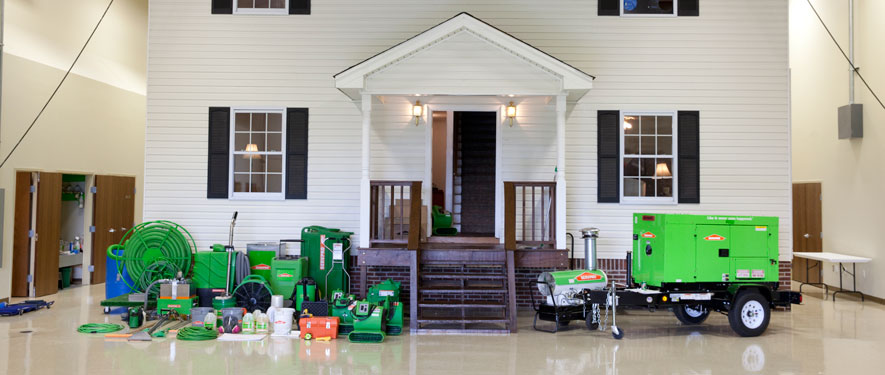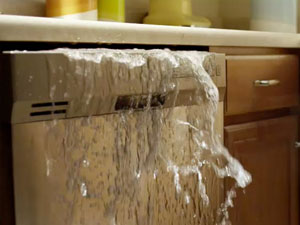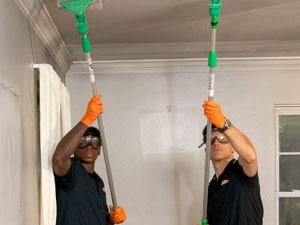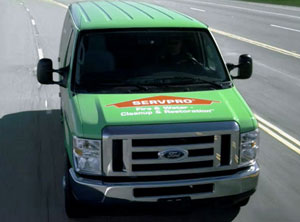
Advanced Technology and Techniques
In the last several decades the emergency restoration field has seen a leap in technology. The industry has changed.
Now, the right technique and the right tools matter. Technique and tools properly applied actually limits the scope of restoration work, saving customers money and time.
Here's a real life example: how do restoration companies locate and identify moisture?
A crude way is the removal of material, which necessarily expands the scope and cost of the work. A simple moisture measuring tool prevents this by helping technicians know exactly where the damage is, and, exactly where the damage is not.
These advancements allow SERVPRO Franchise Professionals to restore a property back to preloss condition quickly, reliably, and more effectively.
Moisture Detection and Measurement Equipment
Scientific drying principles rely upon specialized equipment to detect, measure, and monitor a property’s moisture levels. Recent advances, like infrared cameras, can help us detect water through a wall, ceiling, or floor.
- An infrared camera may be used to identify water location for thorough water removal.
- Sensitive moisture detectors, hygrometers, and other meters measure the extent of moisture saturation
Water Extraction Equipment
Powerful extraction equipment speeds the drying process by removing the bulk of the water from your home or business.
- Submersible and gas-powered pumps for continuous pumping of high-level water.
- Truck-mounted and portable extraction units perform efficient water removal.
Drying Equipment
Industrial strength air movers and dehumidifiers are needed to remove the remaining moisture from ceiling, walls, and floors of your home or business. Proper drying helps to prevent swelling and warping of floors, walls, and furniture.
- High-speed air movers causes moisture to evaporate at a faster pace
- Industrial grade dehumidifiers pull the water vapor from the air.
Odor Removal and Deodorization
Water and fire damage often causes powerful odors. The machines we use remove airborne contaminants and control the air quality during the restoration and cleanup process.
- Air scrubbers
- Thermal foggers and deodorization agents
Sanitizing Agents, Germicides, and Anti-Microbial Treatments
The use of OSHA-approved cleaning agents may be needed to clean and remove odors and/or contaminants on your property.
- Deodorization products control odors from excessive moisture.
- Disinfection products stop the growth of bacteria, fungi, mildew, and other harmful microorganisms.



 24/7 Emergency Service
24/7 Emergency Service




